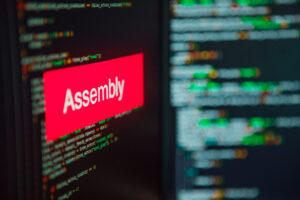How Advanced Automation Will Drive Transformation in 2021

The pace of technological change isn’t slowing down. Organizations are harnessing new tools to develop new services and to improve daily operations. Gartner estimates that by 2025, 60% of IT leaders will use disruptive technologies to drive transformation, as compared to just 5% in 2019.
Many of these technologies, especially artificial intelligence (AI) and the internet of things (IoT), rely on hybrid and multi-cloud services — not to mention huge volumes of data. Cloud services will be critical assets for enterprises looking to leverage emerging technologies from AI to 5G, blockchain to edge computing.
But IT environments are already complex. As a recent study from Flexera shows, 53% of enterprises are running workloads in multiple public and private clouds. IT complexity is continuing to increase as digital transformation initiatives accelerate, and in response, many organizations are increasing their use of automation to manage the groundswell of new processes, applications, and disparate technologies.
By automating processes, IT teams are able to increase efficiency and minimize manual errors, reducing operating costs while freeing up resources for higher-value projects. Bain & Company estimates that the number of companies scaling their automation will double over the next two years.
However, as Gartner notes, “Infrastructure and operations leaders often find their automation capabilities failing to keep pace with digital transformation.”
Why Traditional Automation Is Insufficient
IT environments can include thousands of processes across diverse tools, platforms, and systems. Manually managing this level of complexity isn’t feasible, fueling growth in automation initiatives. But too often, IT is relying on traditional automation tools and practices which can cause more complexity, not less.
Traditionally, automation has been implemented in silos, with IT teams relying on custom scripts and point solutions to automate key processes. This leads to several issues.
To start, custom scripting can be time-consuming, often requiring that IT research, write, test, and re-write before pushing code into production. In an era of rapid change, a reliance on custom scripting has become a roadblock.
Meanwhile, native applications, traditional job schedulers, and task automation tools offer limited capabilities and are implemented opportunistically, for example, to automate batch jobs or to process credit card transactions. As a result, many IT teams are managing at least eight independent automation tools, according to Gartner, which are frequently “deployed and utilized in silos, and may be duplicated.”
Digital business requires that data flow seamlessly across diverse tools and systems, which is difficult to achieve when operating in silos. According to MuleSoft’s 2020 Connectivity Report, integration challenges are a roadblock to digital transformation for 85% of organizations.
“Traditional workload automation strategies are unable to meet the needs of heterogeneous IT environments that include cloud-native infrastructure and big data workloads.”
Gartner, Market Guide for Service Orchestration and Automation Platforms
Workload Automation And Orchestration
Many automation tools are designed for limited use cases, ultimately leading to silos that can actually increase the complexity of an IT environment.
To get around this, an increasing number of organizations are turning to extensible automation platforms that enable IT to orchestrate end-to-end processes. Gartner refers to these tools as service orchestration and automation platforms (SOAPs), which it defines as, “a transformation of a mature market for workload automation tools to meet modern infrastructure, application and data requirements.”
More importantly, 80% of organizations using traditional automation tools are expected to migrate to SOAPs by 2025.
Market-leading workload automation platforms are designed for complex environments that span departments, geographies, and technologies. This is usually achieved through prebuilt, universal connectors and REST API adapters that make it possible to integrate virtually any tool or technology. From managed file transfers to big data, processes can be automated, monitored, and managed from a single location.
Using a workload automation (WLA) solution such as ActiveBatch, IT can assemble cross-platform processes that span a variety of use cases, including:
- IT process automation
- Business process automation
- Infrastructure management
- Batch processing
- Onboarding
- Data warehousing, and more
Extensible automation platforms make it possible for IT to centralize their use of automation. Instead of automating in silos, a single tool can be used to automate cross-platform processes. This allows IT to automate more processes more quickly, improving operational efficiency and the resiliency of those processes.
Just as important, IT can quickly integrate new tools and technologies, making it possible to rapidly adapt to new challenges and business requirements.
Learn more about reducing complexity and enabling transformation in our free eBook, “Stop Fighting Digital Transformation.”
Digital transformation brings new challenges and complexities, but with the right systems and processes, IT can become the agent of change the enterprise needs.
See how you can enable innovation with automation and orchestration by opening the free ebook, “Stop Fighting Digital Transformation”.







